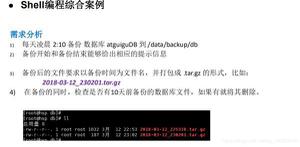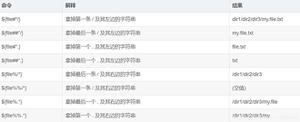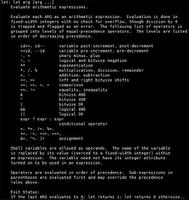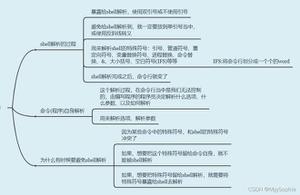【Linux教程】3个实例介绍shell脚本特殊参数用法
| 导读 | 在本文中讨论的一些shell特殊参数是:$*,[email protected],$#,$$,$! |
本实例脚本中使用$*和[email protected]参数:
[[email protected] scripts]# vim expan.sh#!/bin/bash
export IFS='-'
cnt=1
# Printing the data available in $*
echo "Values of \"\$*\":"
for arg in "$*"
do
echo "Arg #$cnt= $arg"
let "cnt+=1"
done
cnt=1
# Printing the data available in [email protected]
echo "Values of \"\[email protected]\":"
for arg in "[email protected]"
do
echo "Arg #$cnt= $arg"
let "cnt+=1"
done
下面是运行结果:
[[email protected] scripts]# ./expan.sh "Hello world" 2 3 4Values of "$*":
Arg #1= Hello world-2-3-4
Values of "[email protected]":
Arg #1= Hello world
Arg #2= 2
Arg #3= 3
Arg #4= 4

export IFS='-'表示使用" - "表示内部字段分隔符。- 当打印参数
$*的每个值时,它只给出一个值,即是IFS分隔的整个位置参数。 - 而
[email protected]将每个参数作为单独的值提供。
$#是特殊参数,它可以提更脚本的位置参数的数量:
[[email protected] scripts]# vim count.sh#!/bin/bash
if [ $# -lt 2 ]
then
echo "Usage: $0 arg1 arg2"
exit
fi
echo -e "\$1=$1"
echo -e "\$2=$2"
let add=$1+$2
let sub=$1-$2
let mul=$1*$2
let div=$1/$2
echo -e "Addition=$add\nSubtraction=$sub\nMultiplication=$mul\nDivision=$div\n"
下面是运行结果:
[[email protected] scripts]# ./count.shUsage: ./count.sh arg1 arg2
[[email protected] scripts]# ./count.sh 2314 15241
$1=2314
$2=15241
Addition=17555
Subtraction=-12927
Multiplication=35267674
Division=0

脚本中if [ $# -lt 2 ]表示如果位置参数的数量小于2,则会提示"Usage: ./count.sh arg1 arg2"。
参数$$将给出shell脚本的进程ID。$!提供最近执行的后台进程的ID,下面实例是打印当前脚本的进程ID和最后一次执行后台进程的ID:
[[email protected] scripts]# vim proc.sh#!/bin/bash
echo -e "Process ID=$$"
sleep 1000 &
echo -e "Background Process ID=$!"
下面是执行的结果:
[[email protected] scripts]# ./proc.shProcess ID=14625
Background Process ID=14626
[[email protected] scripts]# ps
PID TTY TIME CMD
3665 pts/0 00:00:00 bash
14626 pts/0 00:00:00 sleep
14627 pts/0 00:00:00 ps

在本文中讨论的一些shell特殊参数是:$*,[email protected],$#,$$,$!
以上是 【Linux教程】3个实例介绍shell脚本特殊参数用法 的全部内容, 来源链接: utcz.com/a/119825.html









